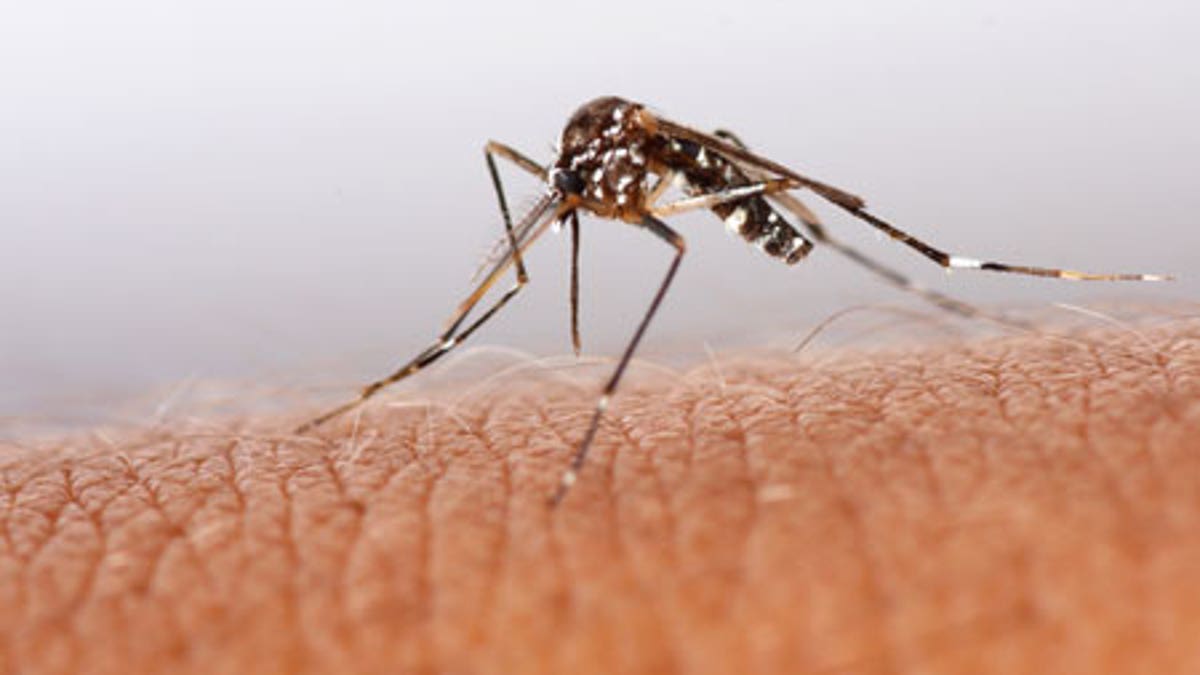
A woman who caught chikungunya fever while vacationing in the Caribbean wound up losing some of the vision in her right eye permanently, according to a new report of her case.
The findings suggest that vision problems may be an underreported effect of the mosquito-transmitted virus, which has spread in recent years from Africa and Asia to the Caribbean, Latin America and parts of the United States, the report's authors said.
"Sight-threatening visual loss can be a late complication of infection with chikungunya," said Dr. Abhijit Mohite, who treated the woman and co-authored the report of her case. [7 Devastating Infectious Diseases]
It is important that people with vision problems get treatment early, to prevent lasting vision loss, said Mohite, an ophthalmologist at the West Midlands Postgraduate Deanery and Queen's Hospital in the United Kingdom.
The virus
Researchers first recognized chikungunya (chik-un-GUN-ya) in Tanzania in 1952. The name is based on an East African word that means "that which bends," because people infected with the virus are often bent over with muscle and joint pain. Other symptoms include fever, headache, nausea, vomiting and rash, according to the case report, which was published online July 28 in the journal BMJ Case Reports.
In July 2014, a Florida man became the first person to get chikungunya in the United States, according to the Centers for Disease Control and Prevention. The disease is transmitted by two species of mosquito — Aedes aegypti and Aedes albopictus — that are recognizable by their black and white legs.
There is no vaccine or drug to treat the disease, but medications such as steroids can treat the symptoms, which include inflammation, said Dr. Aileen Marty, director of the Florida International University Health Travel Medicine Program and Vaccine Clinic, who was not involved in the case report.
Visual loss
The woman in the case was 69, and visited the Caribbean island of Grenada in July 2014. During her stay, she was bitten by mosquitoes, and developed a flu-like illness, fever, rash and joint pain. She also developed muscle weakness in her face, and received steroids from a local doctor to treat it, according to the study.
The woman returned home to the United Kingdom that August. Although her illness appeared to go away (except for lingering joint pain and stiffness), she began having trouble seeing with her right eye.
"Her main symptom was that she felt she could not see the lower half of her vision in the right eye," Mohite told Live Science in an email. "This had come about only a day before she came to see us, and about three weeks after she returned from Grenada."
At first, the woman's central vision appeared fine, and she could see with normal acuity, 20/20 vision, with both eyes. However, as the doctors raced to diagnose her illness — testing her for HIV, syphilis, Lyme disease and dengue fever — her right optic nerve swelled and damaged her vision. Within days, she had 20/80 vision, and could read only to the third line down on the eye chart.
Two days after her initial visit, a blood test showed the woman had chikungunya. But the doctors still had to rule out other possible causes of her vision loss, such as another infection, inflammation, or a tumor pressing on the optic nerve or pathway, Mohite said. [16 Oddest Medical Cases]
After more tests ruled out these conditions, the doctors prescribed steroids to treat the woman's optic nerve, which had swelled as part of her body's inflammatory reaction to the virus, he said. "One of the main risks of high-dose steroids is that they can exacerbate an infection, if she had another infection somewhere else in the body. This is why we had to await all the other tests before we could start steroids, and this took six days."
Treated too late?
However, during the six days that it took for the doctors to run all the tests and prescribe the steroids, about half of the nerve cells in woman's optic nerve died, Mohite said.
The steroids decreased the inflammation, but couldn't undo all of the damage.
"The steroids, unfortunately, were not started soon enough in our patient," Mohite said. The vision loss was permanent.
Other doctors have noted eye problems in people infected with chikungunya, but this is the first known case of a woman in the United Kingdom developing this problem, Mohite said.
It's unknown how often chikungunya infections may lead to eye problems, experts said.
"It's underreported because people don't even do the studies to figure out if it's chikungunya" or another infection, Marty told Live Science. "My personal opinion is that it's really not an uncommon event to get some level of eye involvement," but cases of severe vision problems from chikungunya are probably rare.
The woman's case can help doctors understand that eye-problem complications associated with chikungunya should be treated within days, the authors said.
They last saw the woman in February 2015, and she was still seeing at 20/80 in her right eye, Mohite said.
- Sting, Bite & Destroy: Nature's 10 Biggest Pests
- 10 Deadly Diseases That Hopped Across Species
- 7 Absolutely Horrible Head Infections
Copyright 2015 LiveScience, a Purch company. All rights reserved. This material may not be published, broadcast, rewritten or redistributed.
